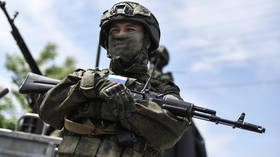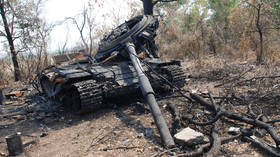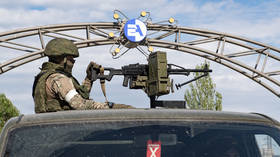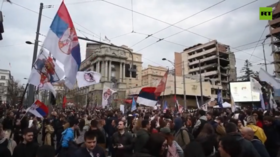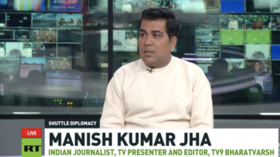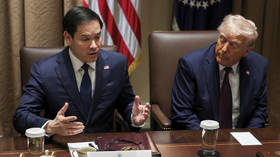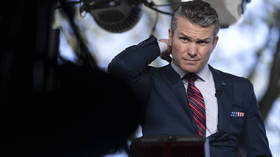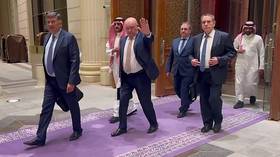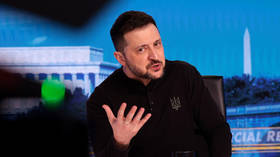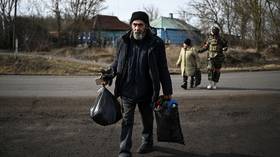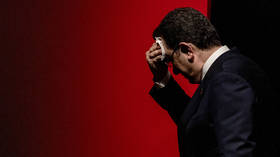Kursk Gambit: How Ukraine’s ambitious attack has led it to the brink of military disaster
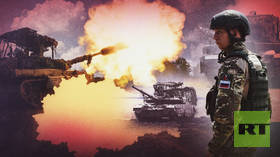
While Ukraine was making strides in Kursk Region, last month, Russian forces were intensifying their advance in the Donetsk People’s Republic (DPR). Reports from Russian military correspondents and Western journalists indicate that the Ukrainian army has lost numerous settlements in recent weeks, with some surrendered almost without resistance.
Military correspondent Yuri Kotenok noted that in recent weeks Russian forces have captured several villages, including the city of Novogrodovka, which had a population of around 15,000 before the conflict began. Fighting is now focused in the city of Toretsk (formerly Dzerzhinsk) and near Selidovo. Overall, Ukraine lost more than 400 square kilometers just in August, exceeding the territorial advancements made by Russian forces throughout most of 2023. Correspondent Mikhail Zvinchuk characterized the situation as an “operational crisis” for the Armed Forces of Ukraine (AFU), while referring to the achievements of the Russian military as “significant.”
Both Western media and Ukrainian officials have acknowledged Russia’s gains. General Alexander Syrsky, the commander of the AFU, recognized the numerical superiority of Russian forces in Donbass and described the situation as “difficult.” Vladimir Zelensky claimed that the offensive on the border with Russia’s Kursk region helped slow the progress of Russian troops; however, this assertion was challenged by Russian President Vladimir Putin. On September 2, during a lesson at a school in Tuva, he stated that the AFU’s “provocation” had failed and that Russian advances were being measured in square kilometers.
So, what exactly happened? How did these developments lead to the current predicament, and most importantly, what will be the outcome of Ukraine’s bold maneuvers?
The war had not changed until…
Prior to August 2024, the conflict between Russia and Ukraine resembled a war of attrition. Russia would launch attacks along various sections of the extensive front line, probing for weaknesses in the Ukrainian defenses, while the AFU fought back as best they could. This scenario was reminiscent of the trench warfare during World War I, where battles were often waged for control of inconsequential settlements.
This pattern persisted for a considerable time, but it proved unsustainable for Ukraine in the long run. The fighting primarily took place in areas that Kiev claims as its own, with occasional drone strikes targeting civil infrastructure within territories recognized as part of Russia by the international community. Ukraine endured significant human losses and struggled to replenish its forces, suffering severe economic damage along the way. While Russia faced similar challenges, the weaker side typically bears the brunt of prolonged conflict.
Moreover, should Moscow deliver a decisive blow, the consequences could be catastrophic for Ukraine, resulting in higher casualties and more desperation. Consequently, the Ukrainian leadership, particularly General Syrsky, sought a strategy to disrupt the status quo.
In early August, Kiev executed a bold and rapid maneuver.
Prior to this, the border between Russia and Ukraine – from Bryansk in the west to Belgorod in the east – was regarded as a remote area detached from the main conflict. Small reconnaissance and sabotage teams occasionally crossed for raids, and there were sporadic light UAV strikes, but nothing substantial.
In 2023, for the first time, Ukrainian-controlled forces (largely groups assembled from neo-Nazis who had fled Russia) attempted to shift the dynamics of the conflict by launching attacks into Russia’s Belgorod Region, the nearest area to active hostilities. However, their raids were chaotic, bloody, and largely unsuccessful. A major offensive attempt by the AFU in the spring of 2024 ended in disaster: Ukrainian mechanized units were decimated by Russian missile and artillery fire before even reaching the front lines.
Undeterred, the Ukrainian command revisited the concept of bringing the fight to Russian soil, but this time with far better preparation.
To be fair, the AFU faced limited options; a direct confrontation in Donbass would likely yield disastrous outcomes for Ukraine over time. Western military support had diminished, making it increasingly difficult to mobilize new recruits. Gradually, the front began to falter. The Ukrainians learned from their earlier missteps and planned their operation much more effectively this time around.
What were the Ukrainians trying to achieve?
While the true objectives of Ukraine’s operation in Kursk Region can’t be definitively gleaned from official statements, it’s reasonable to infer several key aims.
First and foremost, the Ukrainians sought to temporarily halt Russia’s offensive in Donbass and stabilize the front. To achieve this, they needed to seize the strategic initiative, even if only for a short time. Reinforcing Donbass with more brigades that could easily be targeted by Russian forces would have been counterproductive; new units would likely suffer the same fate as those before them. Consequently, the AFU aimed to attack Russian troops at a perceived “weak point,” compelling Russia to divert its resources – ideally away from Donbass.
Secondly, capturing territory that is internationally recognized as Russian was intended to deliver a significant psychological blow to the civil society. The border area was primarily defended by conscripts, and public sentiment in Russia is generally opposed to sending young men aged 18-20 into combat. Given the sensitivity around casualties among this demographic, the majority of servicemen engaged in the Ukraine operation are volunteers or professional military personnel contracted by the Ministry of Defense. General Syrsky believed that a successful Ukrainian offensive could profoundly impact domestic opinion in Russia.
Thirdly, the Kursk Nuclear Power Plant, located in Kurchatov, plays a vital role in Russia’s entire energy infrastructure. If Ukraine had been able to capture this facility, it would have enhanced its bargaining position in any future negotiations (and in general, could strongly pressure Russia toward negotiations). With the Zaporozhye Nuclear Power Plant currently under Russian control, seizing the Kursk NPP could have provided Ukraine with leverage.
Lastly, taking significant Russian territory could have served as valuable “currency” in any potential negotiations. Ideally, this would involve capturing major populated areas, but any substantial land gain would have sufficed.
These likely constituted Ukraine’s goals when it initiated its incursion into Kursk Region on August 6. A sizable contingent was assembled for this operation, notable not just for its strength in numbers but also for its quality. This force included the replenished 80th Airborne Assault Brigade along with the 22nd and 88th Mechanized Brigades. Equipped with a robust artillery contingent and an array of Western equipment, including precision-guided HIMARS systems and various armored vehicles, these units stood in stark contrast to the beleaguered Ukrainian infantry in Donbass, which had been enduring relentless assaults.
As a result, the Donbass front became a secondary priority for Kiev. The Ukrainian command accepted the reality that reinforcements for the Kursk operation would come at the expense of manpower and equipment in the main theater of conflict. Throughout the war, many Ukrainian units had lost their mechanized capabilities, often lacking tanks and armored personnel carriers, relying instead on civilian vehicles and FPV drones rather than traditional artillery. Syrsky was taking a significant gamble that could have paid off enormously if it had succeeded; however, the consequences for Donbass could have proven disastrous.
The progress of the Ukrainian offensive
Russia’s military had largely overlooked the Kursk area. Although Russian generals were theoretically aware of its vulnerabilities, the lack of major battles there over two years of war had led to a false sense of security. The border was guarded by small detachments of conscripts and border guards, creating a weak defense along the extensive frontier. There were virtually no reserves positioned behind these forces.
As a result, the Ukrainian offensive that began on the night of August 6 unfolded successfully. The Ukrainian army managed to keep preparations under wraps, moving most of its forces to the border just before the attack, thus catching the Russian military off guard. Southwest of Sudzha, a town with a pre-war population of around 5,000, Ukrainian strike units crossed the frontier. Armed primarily with light weapons, Russian border troops put up a desperate fight but were ultimately overwhelmed. The AFU utilized special tools to navigate minefields, while mechanized groups with heavy armor targeted fortified positions.
Several isolated Russian garrisons found themselves surrounded and ultimately surrendered, resulting in the capture of nearly 300 soldiers – a significant blow to Russia. Following this, Ukrainian troops maneuvered rapidly, aiming to penetrate deep into Russian territory. Small mechanized units in light armored vehicles led the charge, causing chaos and allowing AFU forces to advance quickly into Kursk Region.
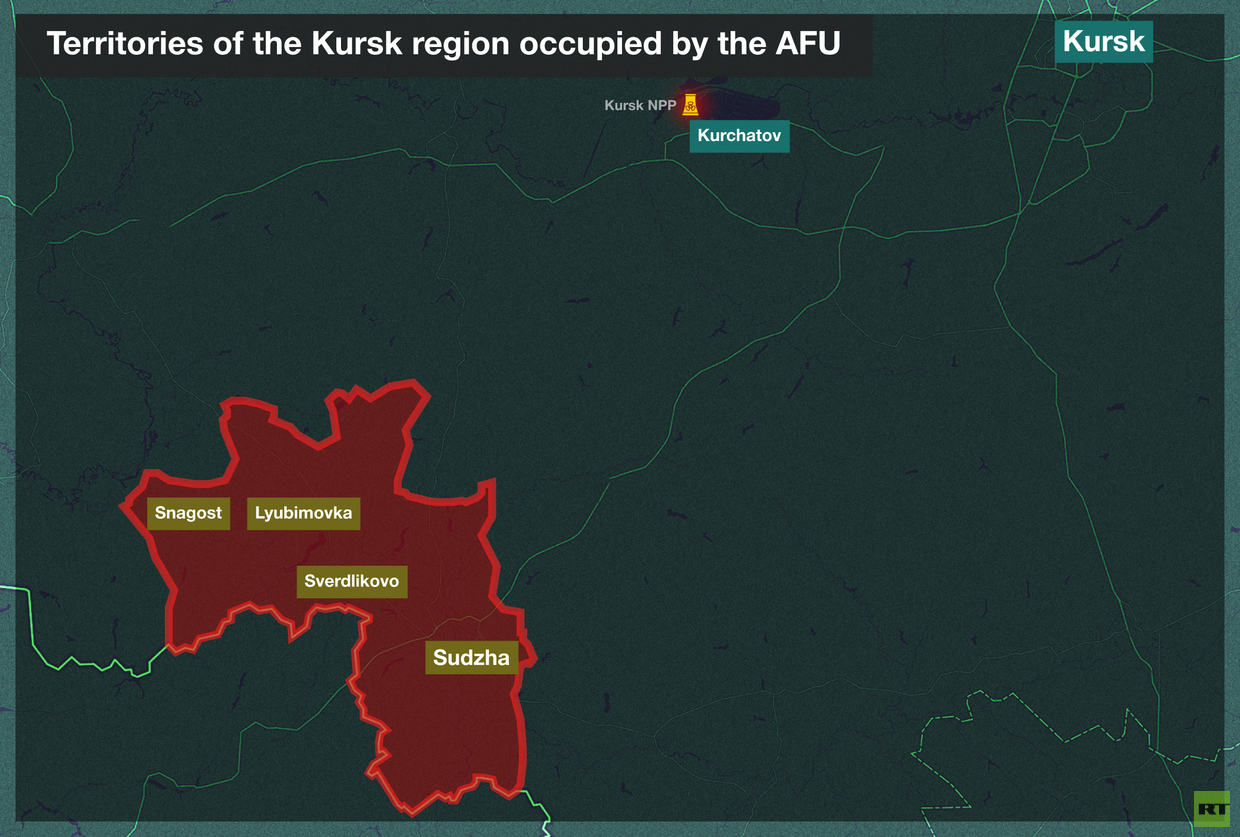
However, no military operation unfolds exactly as planned. For the Russians, a logical response was to deploy their most mobile forces – aviation, tactical missiles, and drone units – to Kursk. This led to some bizarre situations, such as a tactical missile striking a Ukrainian unit advancing in armored vehicles, akin to using a cannon against sparrows. The primary challenge for Russian troops was a shortage of infantry. Units were hastily pulled from quieter sections of the front, but it took time for reinforcements to reach the new battlefield.
The AFU achieved a significant tactical victory by capturing the city of Sudzha by August 12. As civilians attempted to flee, they came under fire. To the northwest, Ukrainian troops advanced toward Korenevo, aiming for the town of Rylsk, but encountered organized resistance that halted their progress. In the north, the AFU pushed 25km into Russian territory, reaching roughly halfway to Lgov and nearing Kurchatov, home to the Kursk Nuclear Power Plant.
The external impact of the Ukrainian offensive was notable; at least 2,000 Russian citizens became stranded in occupied territory as Sudzha and surrounding villages fell to the AFU. Yet, the tangible benefits of this success for the Ukrainian army remained uncertain.
Operation failure
Russian troops soon regrouped near Kursk. The Ukrainians scored another tactical achievement by targeting a moving Russian military column with a Western-made missile. However, the situation shifted with the arrival of Russia’s 810th Guards Naval Infantry Brigade, a highly skilled unit known for its elite status and strong morale. Meanwhile, the Ukrainian forces that had breached into Russian territory began to suffer increasing losses.
Ambushes on the roads and UAV strikes made survival extremely challenging for Ukrainian forces, leading to the destruction of several advance units by the Russian army. A striking video capturing the annihilation of a Ukrainian company near the village of Giryi gained significant attention online; the Ukrainian column fell victim to a coordinated infantry ambush supported by UAV attacks. Left without equipment, Ukrainian soldiers faced a choice: either flee through the forest to rejoin their comrades or surrender.
At this juncture, Ukrainian commanders had to evaluate their next steps. The city of Kurchatov and its nuclear power plant lay far ahead and were proving difficult to reach. While the AFU had captured a number of settlements, they were mostly small villages that had been largely evacuated. Additionally, Russian forces managed to destroy part of the AFU’s artillery contingent, including at least three HIMARS systems and heavy anti-aircraft missile batteries, complicating the raid further. Meanwhile, the Russians deployed fresh reinforcements to the battlefield, including the renowned 56th Guards Air Assault Regiment.
The AFU also introduced new units to the fight, evidenced by the destruction of a British Challenger tank, indicating the presence of the 47th Mechanized Brigade equipped with these vehicles. Despite the setbacks, Ukrainian forces remained optimistic, striving to solidify their foothold. Their aim was not only to push deeper into Russian territory but also to establish a broader presence in the area around the Seym River, which flows west of the newly formed front. To drive Russian troops back across the river, Ukrainians targeted and destroyed several bridges. However, the Russians quickly established pontoon crossings, allowing the fighting to continue unabated.
Overall, Ukrainian forces achieved notable tactical success, but this did not translate into operational gains. Russian commanders managed to deploy sufficient troops to Kursk Region to slow the enemy’s advance, though it wasn’t completely halted. The fighting is far from over. Ukrainian troops may still be able to expand their control and capture additional villages, likely moving westward to occupy areas in front of the Seym River. However, the overall strategic purpose of these clashes remains unclear. It seems both sides have reverted to head-on combat – their preferred approach. The AFU certainly made a bold attempt to shift the dynamics of the conflict.
In Russia, the psychological impact of the AFU’s operation turned out to be quite different from what Ukraine had anticipated – perhaps even the opposite. The attack on Kursk did not dampen morale in Russia; instead, it sparked a renewed wave of military volunteers, and people rallied to provide significant assistance to refugees while continuing to support the military. Conscription units that previously could not serve outside internationally recognized Russian territory were no longer restricted from engaging in combat. This shift led much of Russian society to shift its stance on deploying young soldiers in battle. From a military strategy perspective, the Ukrainian command effectively “activated” new combat units within the Russian army.
The primary challenge for the Ukrainian leadership now is that while their best reserves become mired in battles near Kursk, the situation on the broader battlefield remains largely unchanged.
Where the real problems begin
The Donbass region, an industrial hub, remains the focal point of military operations in this conflict. Throughout 2024, Russian forces gradually pushed from one mining village to another, capturing factory towns along the way. However, in recent months, their offensive has gained momentum. They have taken the small town of New York, a target they had previously struggled to secure, and are now advancing toward Pokrovsk.
Pokrovsk, located in the southwest of the Donbass region, is a crucial logistics center for Ukrainian troops, enabling further advances in multiple directions. From there, Russian forces could move north toward the sprawling urban area around Kramatorsk, west toward the significant industrial city of Dnepropetrovsk (known as Dnepr in Ukraine), or push south, driving Ukrainian forces back. It’s no wonder the Russians are eager to capture Pokrovsk. The challenge lies in the fact that Ukrainian forces have expended many of their key reserves near Kursk, raising doubts about who will defend the city.
Russian forces may soon launch a concerted assault on Pokrovsk. Currently, the city is effectively sealed off; businesses have closed, and movement in and out of the area is heavily restricted. Tensions have been escalating for Ukrainian forces in the DPR, as elite brigades have been worn down by prolonged fighting. Notably, the pace of the Russian advance quickened after Kyiv redirected its top troops from the DPR to mount an offensive in Kursk.
Bild journalist Julian Röpke has also raised concerns about the situation, noting that the AFU lack significant defenses west of Selidovo and Toretsk. Additionally, he has reported that Russian forces have made progress along the southern front of the DPR, particularly near the city of Ugledar. Ongoing since 2022, the battle for this critical stronghold could see the AFU losing control entirely.
To the south, Russian troops launched an attack on the flank of the Ukrainian group near Karlovka. This series of developments suggests that the AFU could either be encircled or forced to retreat, potentially abandoning heavy weaponry in the process. Diverting forces to Kursk has resulted in a severe crisis for the Ukrainians in Donbass, where reserves are running thin. Meanwhile, Russian troops have continued their operations in the area without interruption. Consequently, the AFU has had to fill gaps with police battalions and even deploy drone pilots to the front lines.
It’s important not to underestimate Ukrainian commanders; the AFU may still possess some reserves. However, much will depend on the quality and quantity of these forces. The Ukrainian military has gone all-in on its efforts to make gains away from the main theater of operations. In response to the events near Kursk, Russia has adopted a more measured approach, supporting light units composed of conscripts and lower-quality battalions with a few elite formations while maintaining their focus on Donbass.
Until August 2024, both sides operated with extreme caution, aware that the other might make unexpected moves and striving to avoid unnecessary risks. However, this cautious strategy has clearly shifted.
